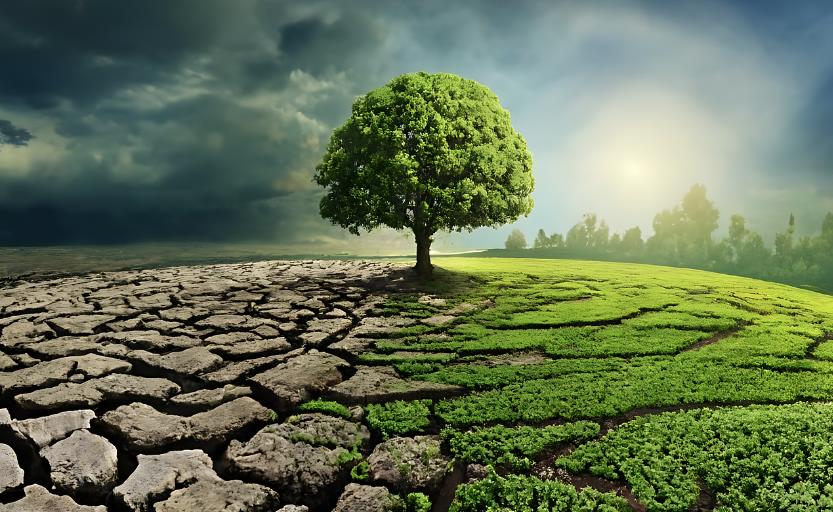by Michael

The seemingly endless drought in the heartland of America is not going to be good for food production. For years, I have been relentlessly warning my readers that Dust Bowl conditions would return to the middle of the country. And now, Dust Bowl conditions have returned to the middle of the country. In fact, as you will see below, it is being reported that conditions are “drier than the Dust Bowl years” in some parts of Iowa. If the heartland of America doesn’t start getting more precipitation, we are going to be facing some enormous problems in the years ahead.
According to drought. gov, half of the Midwest is experiencing drought right now, and things are particularly dire in the state of Iowa…
94% of Iowa is currently in drought, with 24% in extreme drought (D3). Despite decent improvement over the last month, drought is still impacting 68% of Wisconsin and 58% of Minnesota.
Needless to say, the heartland of America produces much of our food.
So it should deeply concern all of us that communities all over the Midwest are starting to run out of water…
The southeast Kansas city of Caney will run out of water by March 1 without rain, officials said. Its school district has moved to a four-day week to conserve water. Four wells in Belle Plaine, Iowa, are producing 40% as much water as usual. Residents of Osceola, near Des Moines, can be fined $65 or more if they defy water restrictions.
Residents in many towns aren’t allowed to wash their cars. Port-a-potties have replaced some public bathrooms.
“We’re hoping it just rains,” said James Rainbolt, manager of a wholesale water plant that supplies parts of four counties in southern Kansas. “We’re at the mercy of the weather.”
Ultimately, we are all at the mercy of the weather.
Despite all of our advanced technology, we remain highly vulnerable to shifting weather patterns.
And at this moment we are being told that some parts of Iowa are literally “drier than the Dust Bowl years”…
Two counties in Iowa have had the driest three-year period on record, going back at least to the 1890s, he said.
“Drier than the Dust Bowl years,” he said.
Dozens of other communities are “carefully watching well levels and streams,” Hall said, “trying to make sure they don’t end up in the same situation as Belle Plaine or Osceola,” which are experiencing water shortages.
As a result of the extremely dry conditions, major dust storms are becoming increasingly common in the Midwest.
Earlier this year, a colossal dust storm in Illinois actually caused a vehicle pileup that involved dozens of motorists…
Gusting winds in the Midwestern United States have kicked up a fatal dust storm, reducing visibility to zero and triggering a major vehicle pileup that killed at least six people on an Illinois highway.
More than 30 additional motorists, from ages 2 to 80, were hurt in the crash as a result of Monday’s storm, according to Illinois state police. Their injuries ranged from minor to life-threatening.
The lack of precipitation is also causing enormous headaches all along the Mississippi River, and authorities are warning that this is not likely to change any time soon…
Lack of rain brought drought to much of the Mississippi River basin early this summer, and it’s likely going to linger into winter, Army Corps of Engineers leadership said during a press conference on Nov. 8 in Memphis, while a dredge was working nonstop to keep the river channel open a few miles south.
It’s the second year in a row that extreme drought has caused a shrinking channel, forcing the Corps to dredge later in the season than normal. Last year, low river levels lingered into the winter, and dredging continued until January.
It’s shaping up to be the same this year.
Welcome to the “new normal” along the Mississippi River.
And considering the fact that so much of our food is transported on vessels that use the Mississippi River, this is a big problem for all of us.
Of course drought is just one of the factors that has been depressing food production in this nation. Overall, natural disasters “caused $21.5 billion in agricultural losses” in the United States last year…
Research from the American Farm Bureau Federation suggests that nationwide, natural disasters caused $21.5 billion in agricultural losses last year. Only about half of those were protected by insurance, the majority of which is sold through federally-backed programs. Their payouts to farmers have increased over 500 percent in the last two decades.
That number is almost certainly going to be even larger this year.
And this is one of the reasons why food prices are going to continue to go up no matter what our leaders choose to do.
Food production is being hammered from one direction after another, and this is happening at a time when global supplies of food are becoming tighter and tighter.
So I hope that you decided to stock up on food while prices were still relatively low.
Because they are a lot higher now, and it won’t be too long before they reach exceedingly painful levels.
314 views